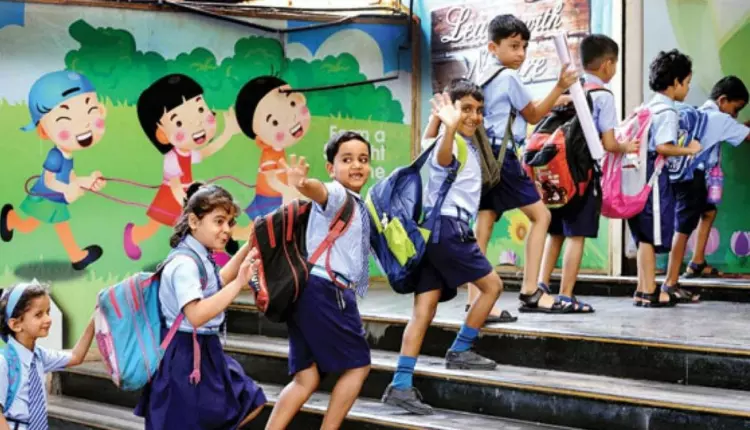The deteriorating air quality in Delhi-NCR is posing severe challenges to the residents’ breathing. Responding to the crisis, the Delhi government has issued a mandate to shut down all private and government schools for the upcoming two days.
The air quality in Delhi NCR has progressively worsened over the past few days, creating significant difficulties for residents due to heavy pollution. In response to this escalating pollution crisis, the Delhi government has decided to close all primary government and private schools in Delhi for the next two days. Additionally, in a bid to manage the situation effectively, the implementation of GRAP 3 is underway. This entails a comprehensive prohibition on all construction and demolition activities in Delhi NCR, with exceptions made for emergency services, government construction projects, and construction activities of strategic significance. Furthermore, the use of BS3 petrol and BS4 diesel four-wheelers will be restricted in Delhi NCR to address the pressing issue of air pollution.
Delhi-NCR is grappling with a surge in air pollution, attributed to incidents of stubble burning and unfavorable weather conditions. The region experienced dense fog on Thursday, resulting in a hazy sky and obscured sunlight. Concurrently, medical professionals have sounded an alarm regarding the rising incidence of respiratory issues. Scientists have also raised concerns about the escalating pollution levels in the Delhi-National Capital Region (NCR) over the next two weeks, which is particularly alarming given that the air quality index in numerous areas already exceeds 400.
In light of the rising pollution levels, all govt and private primary schools in Delhi will remain closed for the next 2 days
— Arvind Kejriwal (@ArvindKejriwal) November 2, 2023
Certain regions are currently experiencing deteriorating conditions. An official from the India Meteorological Department reported that the Safdarjung Observatory witnessed a significant drop in visibility to 500 meters around 8 am, which later improved to 800 meters as temperatures rose throughout the day. By 3 pm, the city’s air quality index (AQI) reached 378. Over the past week, the 24-hour average AQI was 364 on Wednesday, 359 on Tuesday, 347 on Monday, 325 on Sunday, 304 on Saturday, and 261 on Friday. Notably, several areas in the city, including Punjabi Bagh, Dwarka Sector-8, Jahangirpuri, Rohini, Narela, Wazirpur, Bawana, Mundka, and Anand Vihar, witnessed ‘severe’ air quality levels.
The AQI scale categorizes values from zero to 500 as follows: 0-50 (good), 51-100 (satisfactory), 101-200 (moderate), 201-300 (poor), 301-400 (very poor), and 401-500 (severe). In these affected areas, the concentration of PM2.5, fine particles that can deeply penetrate the respiratory system and cause respiratory issues, exceeded the safe limit of 60 micrograms per cubic meter by six to seven times.
Experts from the health sector warn that such conditions can exacerbate asthma and lung-related problems, especially in children and the elderly. Dr. Jugal Kishore, the head of the Department of Medicine at Safdarjung Hospital, recommends that individuals with respiratory issues like chronic bronchitis and asthma adhere to their medication regimen and avoid unnecessary outdoor exposure.
He also suggests using air purifiers indoors. The accumulation of pollutants in recent times is attributed to the absence of rainfall following the monsoon season. Delhi’s Environment Minister, Gopal Rai, announced the government’s plan to restrict construction work in areas where the AQI has consistently exceeded 400 points for five consecutive days.
In response to the alarming pollution levels, the government has initiated the ‘Red Light on Gaadi Off’ campaign to curb vehicular pollution and is planning to deploy 1,000 private CNG buses to enhance public transportation and reduce vehicular pollution.
Stubble burning, particularly in Punjab and Haryana, contributes to peak pollution levels in Delhi from November 1 to November 15. The Punjab government aims to reduce stubble burning cases by 50 percent this winter and eliminate them completely in six districts. Haryana, on the other hand, is making efforts to entirely halt stubble burning this year, as it expects a significant amount of paddy straw generated from paddy cultivation.
A numerical model-based methodology developed by the Indian Institute of Tropical Meteorology indicates that vehicle emissions (11-15%) and stubble burning (7-15%) are the leading contributors to the city’s poor air quality.







